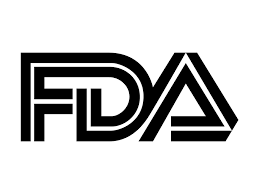Ernest Lawrence conceives the cyclotron, a type of particle accelerator, at Berkeley Radiation Laboratory, University of California, primarily for the exploration of particles and nuclear physics.
The History and Future of Proton Therapy:
1929:
1946:
Robert R. Wilson, a Harvard particle physicist, proposes the medical application of proton beams in his paper titled “Radiological Use of Fast Protons” while working on the design of the Harvard Cyclotron Laboratory (HCL).

1954:
The first human treatments using proton beam therapy are performed at Berkeley Radiation Laboratory for the control of metastatic breast cancer through pituitary irradiation.
1961:
The first proton therapy facility, the Harvard Cyclotron Laboratory at Massachusetts General Hospital, is established in Boston, Massachusetts

1988:
Proton therapy receives U.S. Food and Drug Administration (FDA) approval.
1990:
The National Association for Proton Therapy (NAPT) founded as an independent nonprofit organization to educate and increase awareness about the clinical benefits of proton therapy.
Loma Linda University Medical Center in California becomes the first facility to offer proton therapy exclusively for cancer treatment, utilizing a modified and more efficient accelerator called a synchrotron.

1999:
The Proton Therapy Center at the University of Pennsylvania begins treating patients.
2001:
The Massachusetts General Hospital opens the Francis H. Burr Proton Therapy Center, featuring pencil beam scanning technology.
2012-2016:
The number of proton therapy centers in the United States more than doubles, and the number of patients receiving proton therapy treatment increases by 70%.

2020:
The National Association for Proton Therapy (NAPT) celebrates its 30th anniversary, marking three decades of promoting awareness and accessibility of proton therapy in the United States.
The Future of Proton Therapy
The future of proton therapy holds great promise, with ongoing advancements in technology and increased accessibility, it is likely to become a more widely used and effective treatment for various cancers, offering reduced side effects and improved outcomes for patients.
Accessibility of Treatment
Recent advancements in building proton therapy treatment centers have made the treatment more accessible. Modular construction and affordable treatment delivery systems have addressed traditional barriers such as cost and space limitations.
Expansion of Treatment Capabilities
Proton therapy technology continues to evolve, expanding treatment capabilities and benefiting a greater number of patients. As refinements and improvements are made to the delivery and administration of proton therapies, it is expected to emerge as a primary radiation treatment option, especially for inoperable, pediatric, and well-defined cancers.
Increased Investment
As barriers to entry are addressed, more hospitals and medical facilities are expected to make strategic investments in proton therapy, further increasing its availability and utilization in cancer treatment.
